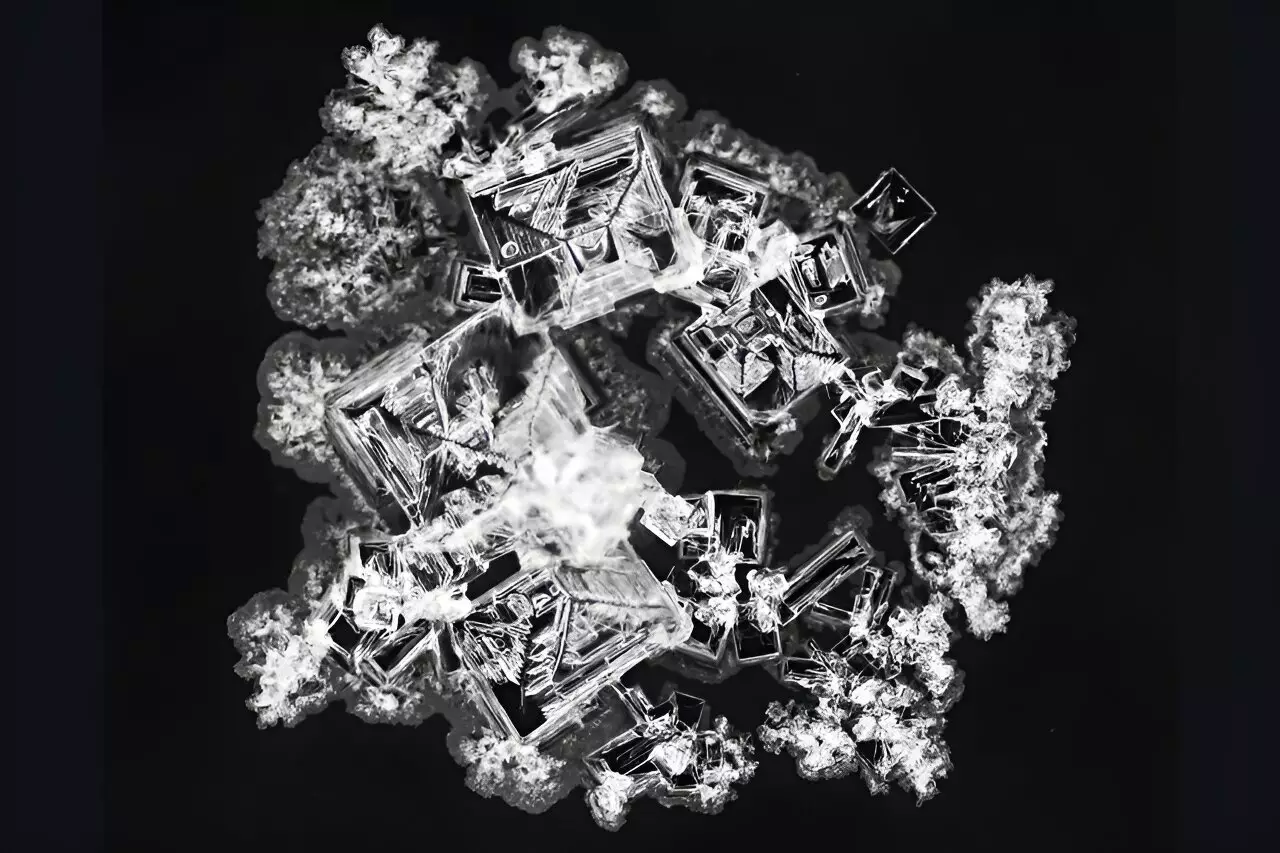Consider the intricate designs created by a simple drop of salt solution as it evaporates, leaving behind unique patterns that resemble abstract masterpieces. Each formation, a celebration of nature’s artistry, is not only visually captivating but also scientifically significant. Researchers at Florida State University (FSU) have embarked on a transformative exploration of these dried salt patterns, utilizing them to harness machine learning capabilities that can discern the chemical composition of various salts. Their groundbreaking study, published in the prestigious Proceedings of the National Academy of Sciences, signifies a remarkable intersection of art and science.
Mechanisms Behind the Salt Patterns
When a salt solution dries, myriad forces influence the final design—capillary action, fluid dynamics, and crystal growth all converge to create something entirely unique. Understanding these processes has long been a focus in the field of chemistry. However, the FSU team, led by Cottrell Professor Oliver Steinbock, took an innovative approach by inverting the typical methodology: instead of analyzing the factors that create different patterns, they sought to determine if patterns themselves could identify the types of salts.
This novel approach required meticulous data collection; the researchers captured 7,500 images of 42 distinct types of salt stains. Employing advanced software, they converted these images into 16 quantifiable parameters. These parameters encapsulate various features such as deposit texture, area, and compactness. This intricate process of turning visual information into numerical data plays a crucial role in training machine learning algorithms, enabling them to recognize patterns corresponding to specific salts.
Precision Through Machine Learning
The results of their innovative study were striking. In tests involving previously unseen images, the machine learning program accurately identified the correct salt 90% of the time. Steinbock expressed astonishment at this high level of precision, noting that this capability effectively differentiates between visually similar substances like sodium chloride and potassium chloride. Such prowess in pattern recognition highlights the potential of machine learning not just as a tool but as an intelligent ally in the realm of chemical analysis.
Moreover, the researchers plan to enhance their training set by integrating hundreds of thousands of new images, thereby increasing the model’s accuracy. This endeavor necessitates automation to keep pace with the demands of data collection, leading to the development of a robotic drop imager currently under experimentation in Steinbock’s lab. As Steinbock aptly put it, “the quantitative capabilities of computer analysis far surpass those of human recognition, especially with a vast array of images.”
Applications Beyond the Laboratory
The implications of this research extend well beyond academic curiosity. Imagine outfitting a spaceship rover on a distant planet with a lightweight camera capable of analyzing salt deposits to decipher their chemical makeup. Such a tool could dramatically reduce the complexity and expense associated with deploying a comprehensive chemistry lab in extraterrestrial environments.
Other potential applications of this technology are equally compelling. For instance, in environments where lab safety is paramount, rapid assessment of material spills can inform immediate action to mitigate risks. The approach is notably versatile, providing insights from minimal material—just a few milligrams is sufficient to analyze a salt stain. This capacity for minimal sample size allows users to make informed decisions based on preliminary analyses, effectively serving as a first step in identifying hazardous substances.
Furthermore, the prospect of utilizing this method in low-resource settings demonstrates a profound commitment to accessibility in healthcare—rapid screening for anomalies in bodily fluids could revolutionize medical diagnostics in underprivileged areas. The combination of speed, accuracy, and cost-effectiveness signals a new frontier in how we approach chemistry and its practical applications.
The Collaborative Effort Behind the Breakthrough
The impressive outcomes of this study are attributed not only to the innovative methodologies employed but also to the collaborative nature of the research itself. Alongside Steinbock, the team included undergraduates and professionals from various institutions, underscoring the importance of diverse perspectives in scientific achievement. Lead author Bruno Batista and collaborators Semhare Tekle, Jie Yan, and Beni Dangi exemplify how interdisciplinary teamwork can yield extraordinary advancements in understanding complex problems.
The images of salt formations analyzed by Steinbock’s lab can be viewed in the SaltScapes Gallery on their website, offering a unique glimpse into the intersection of art and science. This visual repository not only showcases the research but also invites others into the realm of scientific inquiry, promoting a culture of curiosity and creativity in chemistry.
This exploration of salt patterns, through the lens of machine learning, represents a bold leap forward—one that embraces innovation to unravel the intricacies of our natural world, while simultaneously challenging conventional boundaries in chemical analysis.


Leave a Reply